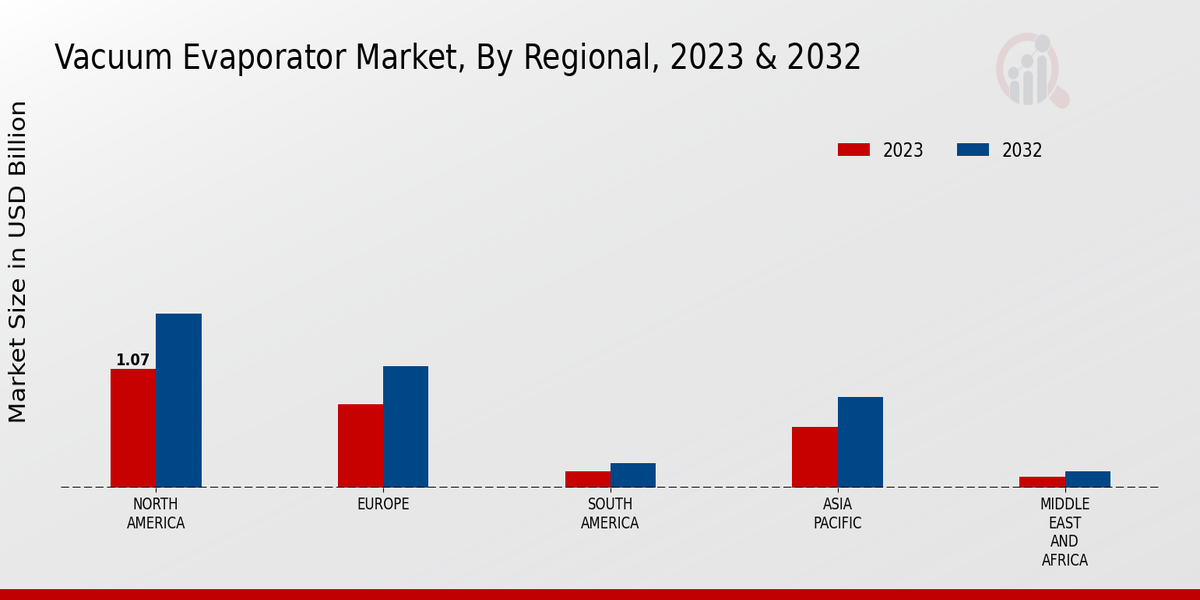Market Growth Projections
The Global Vacuum Evaporator Market Industry is projected to experience robust growth over the next decade. With an estimated market value of 2.35 USD Billion in 2024, the industry is anticipated to expand to 3.84 USD Billion by 2035. This growth trajectory suggests a compound annual growth rate (CAGR) of 4.56% from 2025 to 2035. Such projections indicate a strong demand for vacuum evaporators across various sectors, driven by technological advancements, regulatory pressures, and the need for efficient resource management. The market's expansion reflects the increasing recognition of vacuum evaporation as a viable solution for modern industrial challenges.
Expansion of Industrial Applications
The expansion of industrial applications is a key driver for the Global Vacuum Evaporator Market Industry. Various sectors, including chemical, food and beverage, and pharmaceuticals, are increasingly utilizing vacuum evaporators for concentration and separation processes. This diversification of applications enhances the market's resilience and growth potential. For example, in the food industry, vacuum evaporators are employed for concentrating fruit juices and dairy products, ensuring product quality while minimizing thermal degradation. As industries continue to explore new applications, the demand for vacuum evaporators is expected to rise, further solidifying their role in modern manufacturing processes.
Growing Focus on Environmental Regulations
The Global Vacuum Evaporator Market Industry is significantly influenced by the increasing emphasis on environmental regulations. Governments worldwide are implementing stringent policies aimed at reducing industrial waste and promoting sustainable practices. Vacuum evaporators are recognized for their ability to minimize waste generation and facilitate the recovery of valuable by-products. This regulatory landscape encourages industries to adopt vacuum evaporation technologies as a means of compliance. As a result, the market is likely to witness substantial growth, driven by the need for effective waste management solutions that align with environmental standards.
Rising Demand for Water Treatment Solutions
The Global Vacuum Evaporator Market Industry experiences a notable surge in demand for efficient water treatment solutions. As industries increasingly focus on sustainability, vacuum evaporators are recognized for their ability to concentrate wastewater and recover valuable resources. This trend is particularly evident in sectors such as pharmaceuticals and food processing, where stringent regulations necessitate advanced treatment technologies. The market is projected to reach 2.35 USD Billion in 2024, reflecting a growing recognition of the importance of water conservation and resource recovery. Consequently, the Global Vacuum Evaporator Market Industry is poised for expansion as companies invest in innovative technologies to meet regulatory requirements.
Increasing Investment in Research and Development
Investment in research and development is a pivotal factor influencing the Global Vacuum Evaporator Market Industry. Companies are allocating resources to innovate and enhance the efficiency of vacuum evaporation technologies. This focus on R&D aims to develop solutions that cater to diverse industrial needs while addressing challenges such as energy consumption and operational costs. By fostering innovation, companies can improve product offerings and gain a competitive edge in the market. As a result, the ongoing investment in R&D is likely to drive the growth of the Global Vacuum Evaporator Market Industry, ensuring its relevance in an evolving industrial landscape.
Technological Advancements in Evaporation Processes
Technological advancements play a crucial role in shaping the Global Vacuum Evaporator Market Industry. Innovations such as improved heat transfer mechanisms and energy-efficient designs enhance the performance and reliability of vacuum evaporators. These advancements not only reduce operational costs but also increase the overall efficiency of evaporation processes. For instance, the integration of automation and control systems allows for precise monitoring and optimization of evaporation parameters. As a result, industries are increasingly adopting these advanced systems, contributing to the anticipated growth of the market, which is expected to reach 3.84 USD Billion by 2035, with a CAGR of 4.56% from 2025 to 2035.










